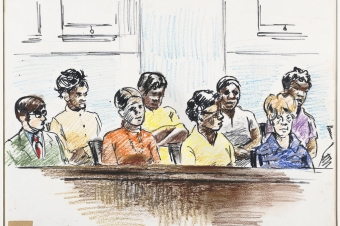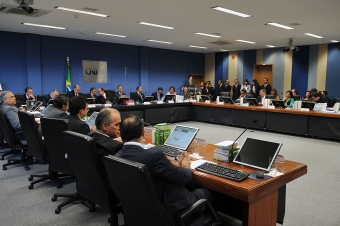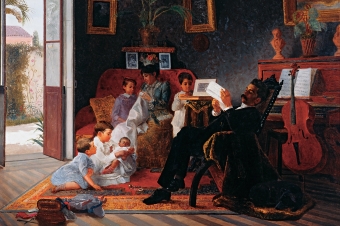Summary:
From a case study, students studied different institutions from the Brazilian justice system in order to understand its functions and relations between them.
Objective:
- Allow students to get in touch with the institutions that compose the Brazilian justice system and look how they essentially work using these four case studies:
a) TRT-SP (political corruption): Court Union Accounts, Inquiry Parliamentary Commission, Federal Justice (Public Civil and Penal Acts), Central Authority (international cooperation requests), General Union Advocacy (exterior asset recovery).
b) Sadia (insider trading): Securities and Exchange Commission, Home Value Commission (Administrative procedure and Adjustment Conduct Term), Federal Justice (Penal Act).
c) Failure (Violence against women): Special Criminal Court, Jury, Domestic and Family Special Court Against Women, Public Defense (Civil Responsibility for material and moral damage).
d) Araguaia (people disappearance): OEA Human Rights Commission, Public Civil Act (proposed by ONG), Internal Affairs, Federal Civil Justice.
The four cases analyzed during the semester showed that on some Law areas (civil, penal, administrative and international) they cannot be understood alone. In real life, the law areas establish a relationship of overlap, concomitance, divergence, etc.
Dynamics:
- TEACHING METHOD: case method.
- PREPARATION: there was no previous preparation.
- INTRODUCTION TO THE DYNAMICS: There were produced four cases (Attachment I <available soon>) about different themes with the goal of approaching the largest number of justice system institutions. Then, all discussed cases institutions throughout the course were analyzed. The list contains 15 institutions. (Attachment II < available soon>).
- DEVELOPMENT OF THE DYNAMICS: On the first part of the activity, the professor presented all the cases to each group (it had 3 or 4 students), since then they have studied institutions that were involved from an observation script (Attachment II <available soon>). The students were stimulated to visit the institutions (at least the ones located in São Paulo city), to obtain a legal prevision to other characteristics and their web content. In addition, they should search its functions and how they allocated and were described in the Federal Constitution. The students realized that the institutions have different functions and physical/administrative structures. In the end, the students produced an individual report, which contained their bibliography and an institution information description. This document was shared to all students, so they could know the institutions that were studied by the other groups.
On the second part of the activity, students were divided in four groups, which studied all cases, and then were able to realize the practical acts of the institution facing a real case. On this step, students had access to all case facts, like the administrative and judicial procedural parts, which gave them several questions related to the procedural dynamic flow and also to some material law introductory themes.
- END OF THE DYNAMICS: on the last four course classes, students had an oral presentation and with that had a detailed discussion about all cases. In this step, students presented the indicated case for each present procedural flow (all involved more than one), and also had a State presence as a decision-making and reviewing authority for all the involved parts. Additionally, they could choose at least one of the procedural principles discussed during the course in order to discuss its violation and observance in a real case. The principles addressed were: the natural judge, guns parity, contradictory and full defense, double degree, publicity, free conviction and the obligation to motivate the procedural business.
- CLASS MINISTRATION: as a first year student activity, it is necessary clarifying the introductory approach character and make them calm about the fact that they would have the chance to come back to a lot of questions they have not worked on during this specific class throughout the course.
Evaluation:
- FEEDBACK FORM: the written group exercises were commented by the professor and returned to the students. If necessary, they could add any part to their answers.
- GRADING: The grade was composed by the individual written institution activity, the oral presentation and the debate participation grade from each case.






